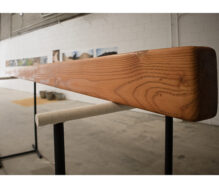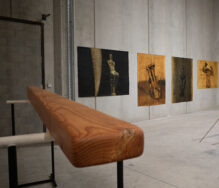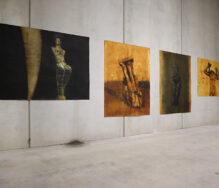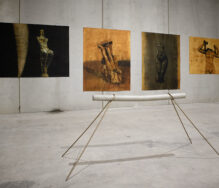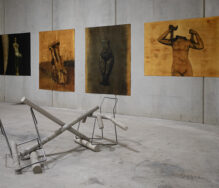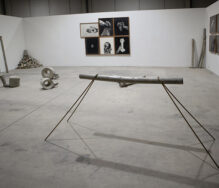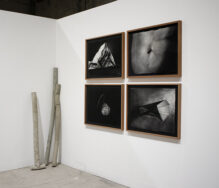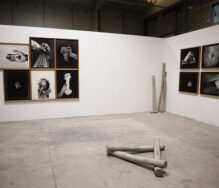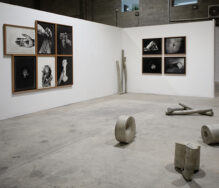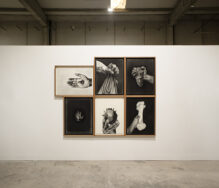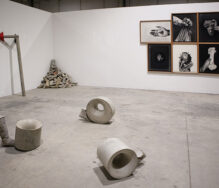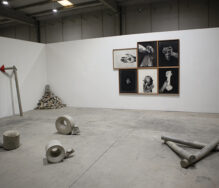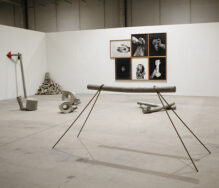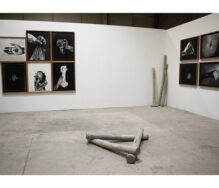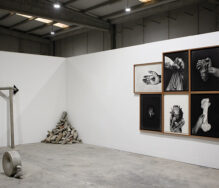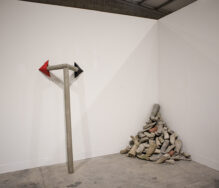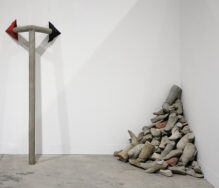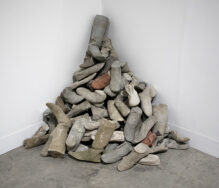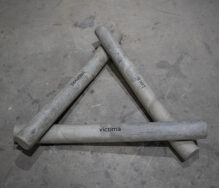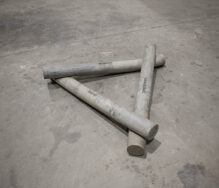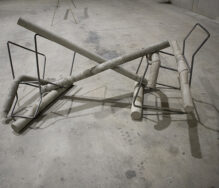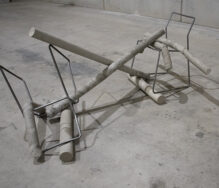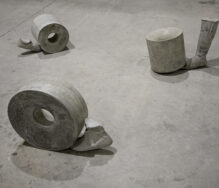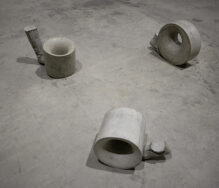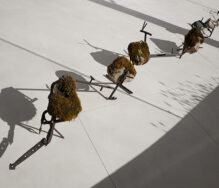Sediments
– 2024. Pòsits. Enlace Art Progress
Group show with Pere Noguera and Pep Aymerich
Group show
—
NOT LOSING FORMS
The title of the exhibition hosted by Enlace Art in Progress, curated by Toni Álvarez de Arana, is “Sediments” but it could have also been the one leading this presentation or, if we dare to imagine, something like “Three visions—or gazes—of contemporaneity”.
Because the first thing we should be clear about when confronting the works of the trident formed by Pere Noguera (La Bisbal d’Empordà, 1941), Pep Aymerich (Sarrià de Ter, 1962), and Toni Giró (Barcelona, 1966) is that each of them represents a possible different creative path and, at the same time, complementary to the other two. Thus, Noguera is the landscape artist committed to the most immediate territory; Aymerich is someone who still believes in a certain metaphysical (and sometimes mystical) dimension of the creative act; and Giró, finally, relentlessly interrogates images in search of their inevitable (and loaded) political dimension.
But there would still be, at least, four more aspects that should be considered in relation to these three artists. The first element to consider would precisely refer to “not losing forms”: if we consider the long trajectories of Noguera, Aymerich, and Giró, all defined by extreme coherence and rigor in their approaches, we must accept that their respective languages are distinctly contemporary. However, none of them has ever renounced careful formalization, thus embodying an alternative to the current art so malnourished and deliberately clumsy to which our most current centers and museums have accustomed us.
Careful formalization, then, but also—and secondly—an immense material sensitivity. Noguera is the artist of the earth, mud, sediments, and imprints; Aymerich is the one who knows better the intimacies of wood and honey, wax and his own body; Giró explores the possibilities of concrete, iodine, and water, without making a fuss about any new material that crosses his path.
A third element would be well illustrated with this quote from Narcís Selles: “There is a well-known reductionism of deep ideological content that limits the political character of art to those cases where there is a more or less explicit questioning of established models and values, as if the rest of artistic products, from the most subtle and indirect to those that tirelessly reproduce the dominant logic, were insignificant from this point of view. And, certainly, this is not the case”. Simply put: all art is political, but only a part decides to opt for obvious denunciation. The opposite option, the non-obvious one, is the one that concerns us now.
And finally—and in fourth place—the three authors insist on an anthropocentric gaze that would remind us, in ecological terms, that what is at risk is not so much the planet, but our own survival as a species and civilization… “Sediments” in the end, as an initiative of Enlace Art in Progress with three vertices of an invaluable triangle that should not go unnoticed.
Eudald Camps

